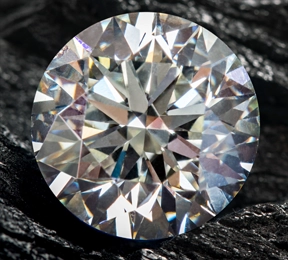Please sign in first
Not a member?

- Home
- Online Education Programs
- ISG Journey Thru Gemology
- ISG Credentials
- Legacy Entrance
- Frequently Asked Questions
- Registry of Graduates
- Careers in Gemology
- Important Program Information
- About the ISG
- Why is the ISG Tuition So Low?
- Testimonials of ISG Students and Graduates
- Meet Your Instructor for your ISG education
- ISG Best Online Gemology School
- Graduate Support Programs
- Ishihara Color Vision Test
- Privacy Policy
- Newsletters
- The Story of Ruby
- Turquoise Investigation by the ISG
- The Story of Petrol Quartz
- Top 5 Myths About Jewelry Insurance Appraisals
- The Story of Time
- The Story of Freshwater Pearls
- The Story of Agates and Jaspers
- Susan Bailey v. Frantz Jewelers, et al.
- The Story of Blue Topaz
- The Story of Tibet Andesine
- The Story of Oregon Sunstone
- The Story of Created Moissanite
- Identifying Lab Created Diamonds
- Black Diamond or Created Moissanite?
- Ebay, the GIA, and Section 230
- Lessons From the Angry Janitor
- Exposing the Truth about Lab-Created Diamonds
- AGTA Hobbles Dealers and Buyers
- Appraisers -v- Gem Labs…a Legal Imbalance!
- Understanding the Classification of Diamonds
- Cremation Diamonds: Insuring and Litigating
- Let’s Talk About Gemology Credentials
- Hometown Jewelers and the Force Majeure Clause
- Following the Critical Angle of Diamond Grading
- When Breitling Brought the Airmen Home
- Let’s Open a Refractometer
- Measuring the Energy of Light
- Quick Reference Guide to Sunstone
- ISG Seeing the Invisible Light
- Contact Us
Cremation Diamonds: Insuring and Litigating
Insuring and Litigating Cremation Diamonds

 This year marks the 20th year since my first investigation of “Cremation Diamonds” while working in the Property and Casualty Division of USAA Insurance. The investigation centered around creating an Internal Operating Procedure for handling damage and loss claims of cremation diamonds. I set out to prove the viability of cremation diamonds. However, the investigations into the U.S. Patents of LifeGem ® quickly turned from verification into an investigation that exposed a gross misrepresentation of the product.
This year marks the 20th year since my first investigation of “Cremation Diamonds” while working in the Property and Casualty Division of USAA Insurance. The investigation centered around creating an Internal Operating Procedure for handling damage and loss claims of cremation diamonds. I set out to prove the viability of cremation diamonds. However, the investigations into the U.S. Patents of LifeGem ® quickly turned from verification into an investigation that exposed a gross misrepresentation of the product.
The real issue for insurance companies and litigators is that at some point in the future I anticipate this situation will create chaos for insurance companies and law firms. How does an insurance company handle a damaged or lost diamond claim when the diamond is supposedly the remains of someone’s Uncle Joe? Even more crucial, enough consumers will eventually wake up to what has been done to them by these “cremation diamond” companies and demand justice through a class action suit or something similar. After this many years of investigating this issue, insurance coverage risk alerts and misrepresentation litigations should be a slam dunk when and if someone with enough juice gets involved to fully expose the facts based on the science.
Here are the facts (we will call them problems) of Cremation Diamonds based on the actual cremation diamond patents and independent scientific testing.

The first problem is the U.S. Patent Application by LifeGem, the largest cremation diamond company, who fully admits that carbon is eliminated during the cremation process:
“…. conventional cremation eliminates most of the native carbon,….” LifeGem
Second, the LifeGem patent requires that the body of the deceased loved one had to be only partially cremated to get carbon from it, Again, from the LifeGem patent:
“The preferred process for collection begins with the oven operator positioning the body in the oven so that the head and chest area are not positioned directly underneath the main burner. Positioning the body in this manner assures that carbon will remain in the body’s head area. The carbon can then be gathered by hand, or by using a metal shovel or scoop, or the like.” LifeGem Patent
These facts from a leading cremation diamond company were never disclosed to the consumer, and funeral homes consulted for my investigations confirmed they would never do a partial cremation as required by the LifeGem patent.
This patent review started what has become a 20-year investigation into the misrepresentations by the cremation diamond industry as a whole. The investigation culminated when I discovered a study done at the University of Montana and published in the American Geophysical Union, Fall Meeting 2018, abstract #B53F-2139 . This study first published here:
“Determining the Presence of Remains Using the Chemical Composition of Burned Cadaver Ash” ScholarWorks at University of Montana, Megan J. Richardson, et al., 2017
The purpose was to study the viability of identifying human remains from the ashes of disasters, such as the 9/11 World Trade Center in 2001. Although direct test of human remains was not possible, the study utilized cremation ashes from pigs which closely emulate the physiological make-up of humans. (National Institute of Health).
What they found would serve as the final inherent flaw in the claims of cremation diamond companies.
The Findings
The findings of this study were profound. All carbon is essentially burned off after a body is subjected to a fire of only 1112 degrees F (600 degrees C). Most cremation diamond ovens burn at 1800 degrees F. (982 C)
“Carbon and nitrogen are essentially burned off when 600⁰C (1,112 degrees F) is reached. page 3 Megan J. Richardson
The study goes on to explain what happens to the carbon of a body during a fire:
“During calcination, the carbon bonds with oxygen to form carbon monoxide or carbon dioxide, leaving only the hydroxyapatite making up the shape of the bone.”
Page 6 Megan J. Richardson
Here is the chart showing the amount of carbon content going down to zero and the corresponding temperatures of the test:

#image_title
Conclusion
Based on the cremation diamond industry’s own documents, the carbon of a human body is consumed in a cremation oven that burns, on average, 1800 degrees F. (982 degrees C) according to the cremation industry sources. Carbon leaves the cremation chamber as carbon monoxide or carbon dioxide. (Richardson 2017).
Furthermore, actual tests of cadavers in burning ovens not even reaching the temperature of cremation ovens demonstrate that carbon is essentially burned off at 1,112 degrees F.
This leaves us with a question: What are the cremation diamond companies using to make the diamonds they deliver to customers as “cremation diamonds”?
I put this question to various Attorneys General offices and the U.S. Federal Trade Commission. Their response was typical bureaucratic dance steps:
“Without consumer complaints, there is no reason to act on this.” FTC Attorney 2009
Which brings up one final question: How do we get consumer awareness of this heinous situation?
After 20 years of trying, I do not have the answer to the last question. Big money buys big advertising.
In the case of cremation diamonds, it also buys big profits by preying on consumers at the most vulnerable time in their lives.
Given the hugely inflated prices of cremation diamonds, there is little doubt that insurers are paying claims on a product that the science says is being grossly misrepresented to consumers.
It is my hope that at some point in time, a class action law firm will take a closer look at cremation diamonds and start asking the question I have been asking for the past 20 years with these two challenges:
- What is the source of the carbon being used to make these “cremation” diamonds,
- Prove it!
That is my opinion, I welcome you to send in yours.
Robert James FGA, GG
International School of Gemology